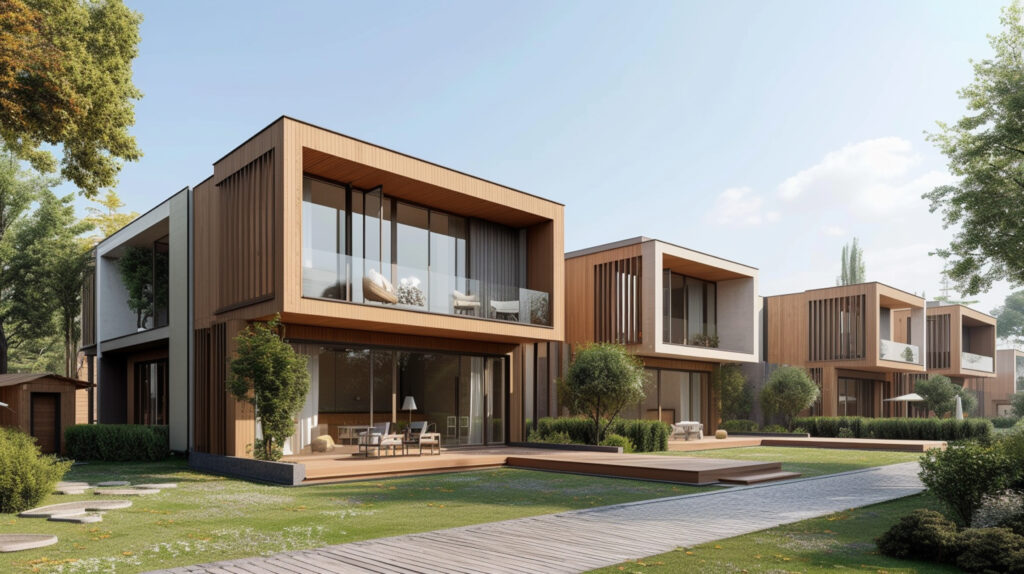

Real estate fractional ownership is a well-liked idea that enables several individuals to jointly own a property, usually a high-value asset like a vacation house, opulent apartment, or business property. Each investor has rights and duties that are commensurate with their proportional ownership of the property.
Commercial real estate, office buildings, and luxury homes are common uses for fractional ownership. Unlike Real Estate Investment Trusts (REITs), where individuals own shares of a portfolio, fractional ownership provides actual equity in a specific property, often giving investors access to the benefits of direct property ownership, such as rental income, appreciation, and a say in property management.

Fractional ownership is a novel idea that has surfaced in the dynamic realm of real estate and has the potential to democratize property investing. By removing the obstacles to owning high-value real estate, this creative strategy enables investors to take use of real estate’s advantages without bearing the entire financial load. Let’s examine fractional ownership, its operation, and a real-world example of using this ground-breaking approach to invest in a ₹1 crore home.
How Fractional Ownership Works
Let’s examine fractional ownership in more detail. Assume a ₹1 crore commercial property exists. Instead of one investor buying the entire property, ten investors may pool their money and each contribute ₹10 lakh, making them collectively own 10% of it.
This is a simplified procedure of how it could operate:
1. Property Selection: A high-value property, such as a ₹1 crore luxury villa or commercial building, is chosen. Parts of this property are for sale to investors.
2. Investment: The land is divided up into “shares.” In this instance, there are ten shares available at ₹10 lakh apiece.
3. Ownership Structure: A proportionate part of ownership is awarded to each investor. In our case, 10% of the property is owned by each of the ten investors.
4. Legal Agreement: To safeguard the interests of investors, a formal legal structure is established to hold the property, such as a Limited Liability Partnership (LLP) or a Special Purpose Vehicle (SPV).
5. Revenue and Gains: Rental income is distributed to investors based on their stake. For example, if the property generates ₹10 lakh in annual rent, each investor would receive ₹1 lakh. In addition, every investor will profit according to their stake if the property increases in value and is eventually sold for ₹1.2 crore.
Important Features of Real Estate Fractional Ownership:
• Shared Ownership: A number of people own varying proportions of the property.
• Usage Rights: Every owner is entitled to use the land for a predetermined period of time every year.
• Shared Expenses: Depending on their respective ownership shares, owners split costs such as utilities, upkeep, property taxes, and mortgage payments.
• Rental money: If the property is rented out, the owners split the rental money based on their respective ownership shares.
• Property Management: Day-to-day tasks including reservations, upkeep, and tenant interactions are frequently managed by a qualified property management business.

Benefits of Fractional Ownership
1. Lower Entry Barrier: Smaller investors can now access high-value real estate thanks to fractional ownership. In our example, one can engage with as little as ₹10 lakh, instead of needing to invest ₹1 crore.
2. Diversification: It allows investors to diversify their investment over several properties and lessen risk, rather than locking all their funds into one property.
3. Shared Risks and Costs: Maintenance and upkeep costs are shared among all investors. Ten investors split the costs of operating and keeping up a ₹1 crore property, as opposed to just one.
4. Access to Premium Properties: Typically out of the price range of an average investor, investors now have access to high-value, income-producing properties.
5. Potential for Higher Returns: In terms of both rental income and property value, properties in desirable areas or commercial spaces typically give higher returns.
Real estate fractional ownership is a well-liked idea that enables several individuals to jointly own a property, usually a high-value asset like a vacation house, opulent apartment, or business property. Each investor has rights and duties that are commensurate with their proportional ownership of the property.
Real Estate Fractional Ownership Examples:
• Vacation Homes: Investors can split the costs and obligations of owning a luxurious vacation home in a sought-after area, enabling them to use it for a portion of the year.
• Luxurious Apartments: High-end apartments in major cities can be purchased with fractional ownership, giving investors a distinguished address and the possibility of rental income.
• Commercial Properties: Companies can share ownership and the related costs and benefits of investing in commercial properties such as office buildings or retail spaces.

Example: Purchasing a ₹1 Crore Property
To demonstrate the operation of fractional ownership, let us examine the example of a premium residential flat in a Mumbai prime location, valued at ₹1 crore. Situated in a highly sought-after neighborhood, this opulent three-bedroom apartment has an estimated annual rental revenue of ₹10 lakh, or around ₹83,000 per month.
For most private investors, the ₹1 crore price tag is unaffordable if bought outright. On the other hand, a fractional ownership model divides the property into ten equal parts, each worth ₹10 lakh. Assume ten investors choose to purchase the property:
Purchase Price: The total amount invested is ₹1 crore, with each investor contributing ₹10 lakh.
Rental Income: The monthly rent for the apartment is ₹83,000. Ten investors would split the rental money, which would total ₹8,300 a month or ₹1 lakh annually, among themselves.
Property Management: Tenant complaints, upkeep of the property, and rent collection are handled by a professional property management business, which is compensated for its services with a tiny portion of the rental income. For investors, this simplifies the procedure.
The property gains ₹1.5 crore in value after five years. When all of the investors agree to sell, they each pocket ₹15 lakh for their portion, making a profit of ₹5 lakh (a 50% gain) on their initial investment.
Fractional ownership is ideal for:
First-time investors: First-time investors are those who wish to get into the real estate industry but lack the funds to buy a whole property.
Diversified investors: Investors that want to diversify their holdings without fully committing to real estate are known as diversified investors.
High-Net-Worth Individuals: Those who wish to diversify their risk by investing in a number of high-value properties in different locations and property classes.
The Difficulties of Shared Ownership:
1. Liquidity Problems: Fractional real estate ownership is less liquid than publicly traded REITs. It may take some time to sell your share, particularly if there isn’t a willing bidder.
2. Investor Disagreement: Reaching a consensus on important property decisions, such as when to sell or undertake large repairs, can occasionally be difficult.
3. Management Complexity: Compared to a single-owner situation, managing several owners may be more difficult. It is vital to guarantee openness and unambiguous correspondence between the proprietors.
Conclusion :
Real estate investing is being revolutionized by fractional ownership. It democratizes real estate investing by enabling a group of investors to pool their resources to purchase a high-value property, making it more approachable and accessible to a wider range of people. This property investment strategy, which offers more accessibility, shared risks, and appealing profits, has the potential to transform the real estate investment environment with the use of technology.
Fractional ownership is an attractive opportunity for investors who want to get into the real estate market without the hassle of full ownership, or who want to diversify their portfolios across high-value properties. Similar to the ₹1 crore Mumbai house we used as an example, fractional ownership allows for the purchase of upscale real estate, profit sharing, and a fresh perspective on real estate investing.


🌄 Himachal is Not for Sale: Understanding Section 118 and Why It Matters


From Sky Gardens to Smart Rentals: The New Face of Real Estate in 2025



